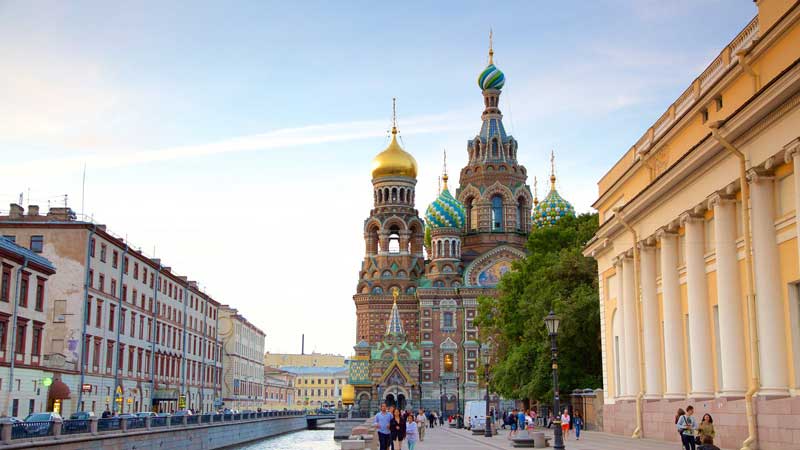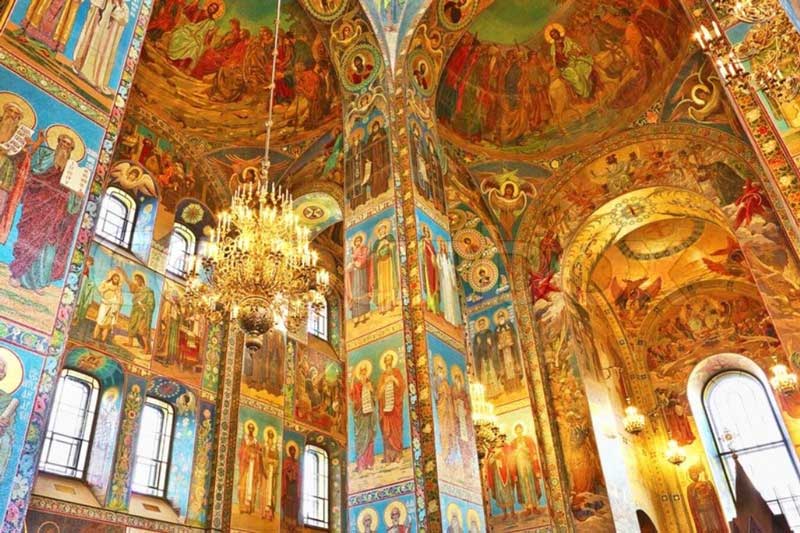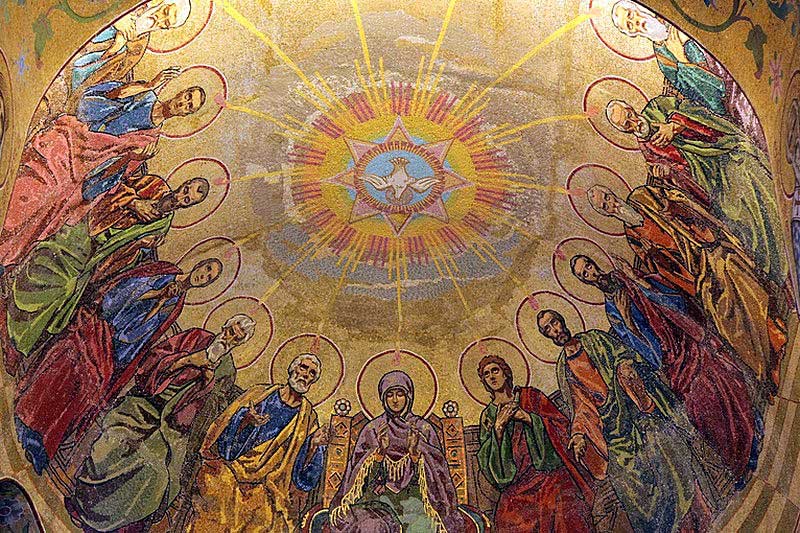
Prominently situated along the Griboedov Canal and considered as one of the magnificent landmarks of St Petersburg, Russia, the dazzling five-domed spectacular building of the Church of the Resurrection of Christ is popularly known as the Church of the Savior on Spilled Blood, as it was built on the site where Tsar Alexander II of Russia was assassinated. The exact spot of the assassination is enclosed within the walls of the church and is marked by a chapel in the building.
Tsar Alexander II survived six attempts on his life, but the seventh took his life. It was in the evening of 1st March 1881, while he was returning to the Winter Palace in his royal carriage and passing along the embankment of Ekaterina (now Griboyedov) Canal, suddenly a grenade thrown by an anarchist exploded. The emperor was shaken at the suddenness of the incident, but he was unhurt and got out of his carriage to have a good look. A second conspirator took the opportunity and threw another bomb at him, which fatally injured him. As he was bleeding profusely, he was taken back to the Winter Palace, where he died a few hours later.

Two years after the assassination of Alexander II, his son Alexander III started to build the church, dedicated to be a memorial to his father. He intended to construct the church, according to the architecture of the traditional churches of the 17th century Moscow and Yaroslavl. However, that was highly unusual for St Petersburg, as the city was built only in the 18th century and was devoid of any church of the earlier century.
Nevertheless, the tender for the design and construction of the new edifice was won by Alfred Alexandrovich Parland. Incidentally, he was an architect with German-Scottish roots, as well as the religious leader of Archimandrite Ignatius. The official groundbreaking ceremony took place in 1883 and the project was completed in 1907, during the reign of Nicholas II.

While most of the buildings and religious structures in St Petersburg were constructed in the Baroque and neo-Classical styles, the Church of the Savior on Spilled Blood was built in the classic Russian style of the church, as it was the era of the resurgence of nationalism. The outside of the Church of the Savior on Spilled Blood was designed to mirror the magnificent St Basil's Cathedral in Moscow. The magnificent building, built of red brick and crowned with multicolored, gilded domes, seems to resemble a brightly coloured folk costume. The colourful onion domes, of which the central one reaches a height of 266 feet (81m), are covered with bright enamels. Four columns of grey violet jasper stand as the base of the shrine and are supported by a frieze and cornice and stone-carved pediment with vases of jasper along the corners.

The interior of the church is richly decorated with about 7000 square metres of outstanding mosaics, depicting mainly biblical scenes, saints and different designs, mostly designed by the prominent artists of the time. While the large icon of St. Alexander Nevsky was created according to a design by Mikhail Nesterov, the icons of the main iconostasis Mother of God with Child and the Savior were painted to the designs by Viktor Vasnetsov. The big mosaic panel in the platform of the central cupola, which depicts Christ giving a blessing with his right hand and holding the gospels in his left, was painted according to a design by N. Kharlamov.
At the end of the church, opposite the altar, there is an elaborate shrine in the form of a canopy or cupola, embellished with different semi-precious stones, which represents the exact spot of the assassination of Alexander II. However, the church was built without a parish and never gave any public mass.

During the Russian Revolution of 1917, this amazing church was indiscriminately ransacked and the interior was badly damaged. As if that was not enough, after the Revolution, the authorities cut off the financing and the church was forced to take charge of its own expenses and set up a parish. However, the Soviet government closed the church in 1932, as they did with most churches in St. Petersburg and melted its bells.
At the beginning of World War I, St Petersburg was renamed Leningrad and during the siege of Leningrad by the Nazi German military forces between September1941 and January 1944, the Church of the Savior on Spilled Blood was converted into a morgue where bodies found on the city streets were brought. After the war, it also served as a warehouse and was sarcastically named as Savior on Potatoes. After that, for many years, a local opera used the cathedral as a warehouse for stage scenery and props.

In the 1950s, there was an attempt on the part of the government to demolish the church, as it allegedly hampered the traffic along the Griboyedov Canal, since part of the latter had been filled up to make way for construction of new buildings. However, the plan was shelved due to tremendous public protest, which saved the Savior.
Fortunately, in the late 1960s, the church was recognized as an architectural monument. It was restored over a period 27 years and was reopened in 1997. Today, the Savior on Spilled Blood serves as a museum of mosaics and is one of the main tourist attractions in Saint Petersburg.